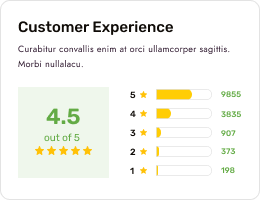
What Are Real Time Flight Price Alerts?
Personal Experience in Utilizing Flight Alerts
How to Set Up Flight Alerts
- Choose a reliable platform, such as Google Flights or a dedicated app like Hopper.
- Enter your desired route, including departure and arrival cities.
- Select your travel dates or opt for flexible date ranges.
- Turn on price tracking. This feature will notify you of significant changes.
- Review and adjust alert settings as needed, ensuring it aligns with your travel preferences.
With these steps, you can stay ahead of price changes for your next adventure.
Benefits of Using Real Time Flight Price Alerts
- Cost Efficiency: Secure the lowest fares without constant manual searches.
- Timeliness: Receive alerts as soon as price changes are detected.
- Convenience: Automate the price tracking process, reducing the legwork involved in flight booking.
- Flexibility: Adjust alerts for various travel scenarios, from spontaneous getaways to meticulously planned vacations.
Addressing Common Concerns About Flight Alerts
How Effective Are Flight Alerts, Really?

Understanding Real Time Flight Price Alerts
What exactly are Real Time Flight Price Alerts, and how do they work?
Real Time Flight Price Alerts function as a helpful tool for travelers looking to book their flights at the best possible price. Essentially, these alerts monitor airline ticket prices and notify users of any significant changes. Whether there’s a sudden drop or an unexpected spike, you’ll receive timely updates directly to your device. This allows you to make informed decisions about when to book your tickets, potentially saving you a substantial amount of money. Platforms like Google Flights and specialized apps such as Hopper provide customized alerts based on your travel preferences, ensuring you’re always in the know. Imagine planning a dream trip to Sydney; with these alerts, you could receive an update about a price dip and quickly secure a great deal. This technology empowers travelers to stay ahead of price trends and avoid overpaying for their flights.
Common Concerns and Misconceptions About Flight Alerts
Are there any risks or downsides to relying on flight price alerts?
Using flight price alerts is generally a low-risk strategy for securing better airfare deals. However, some common concerns come up, such as the timeliness and privacy of the alerts. Most credible platforms update prices in real-time, ensuring you receive the latest information. Always opt for services known for their security measures and transparency. There are also misconceptions about getting overwhelmed with notifications. To manage this, customize your alert settings by specifying routes, dates, and airlines of interest. This ensures you receive only the pertinent information. Personally, I’ve found that tailoring my alerts to fit the specifics of my trip keeps the process streamlined and efficient, allowing me to focus on planning the rest of my journey without unnecessary distractions.
Setting Up Flight Alerts for Maximum Benefit
How can I effectively set up flight alerts to ensure I don’t miss out on potential savings?
Setting up flight alerts is straightforward but requires some initial input to maximize their effectiveness. Start by selecting a reliable platform like Google Flights or an app like Hopper. Enter your intended route, including the departure and destination cities. Next, choose your travel dates, or if you’re flexible, opt for a range. Activate the price tracking feature, which will send you notifications of any significant price changes. Adjust your alert settings to match your preferences–whether that’s for specific airlines, travel classes, or even budget limits. By following these steps, you’ll be well-equipped to receive timely and relevant alerts. Think of it as setting a smart watch for your travel plans, ensuring you act quickly when a great deal arises.
Evaluating the Effectiveness of Flight Alerts
How effective are flight price alerts in truly helping travelers save money?
From experience, flight price alerts are particularly effective, especially during off-peak seasons when airlines frequently adjust their fares. A notable example is a traveler who was able to fly to Australia at a fraction of the regular fare due to an unexpected price drop alert. Data suggests users of these alerts regularly experience savings, thereby reinforcing trust in the tool. Whether you’re a seasoned traveler or someone planning a spontaneous getaway, these alerts can be a game-changer. They offer a level of convenience and financial advantage that manual searches simply can’t match. Next time you’re planning a trip, consider setting up an alert to gauge its impact firsthand.
Personalized Experiences with Flight Price Alerts
Can you share a personal story or example where flight price alerts made a significant impact on travel plans?
Absolutely! As a travel veteran, I’ve witnessed firsthand how flight price alerts can change the game. Picture this: a client aiming to visit Rome but working with a tight budget. By setting up flight alerts, we noticed an early morning notification of a price drop, enabling them to book a round-trip ticket at nearly 30% less than expected. This not only allowed them to explore Italy affordably but also opened up budget space for additional experiences like vineyard tours or culinary classes. Such stories highlight the power of these alerts in making travel dreams more achievable. Have you had a similar experience where technology completely transformed your travel plans?
Resources
- Federal Aviation Administration (FAA) – The official website of the Federal Aviation Administration provides a wealth of information on air travel regulations, safety, and more.
- U.S. Department of Transportation – The U.S. Department of Transportation’s website offers valuable resources on travel, including flight regulations, consumer protections, and more.
- Bureau of Labor Statistics – The Bureau of Labor Statistics website provides data on travel and tourism, including industry trends and statistics.















